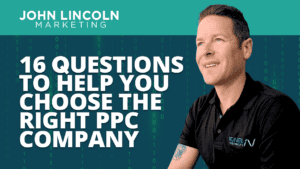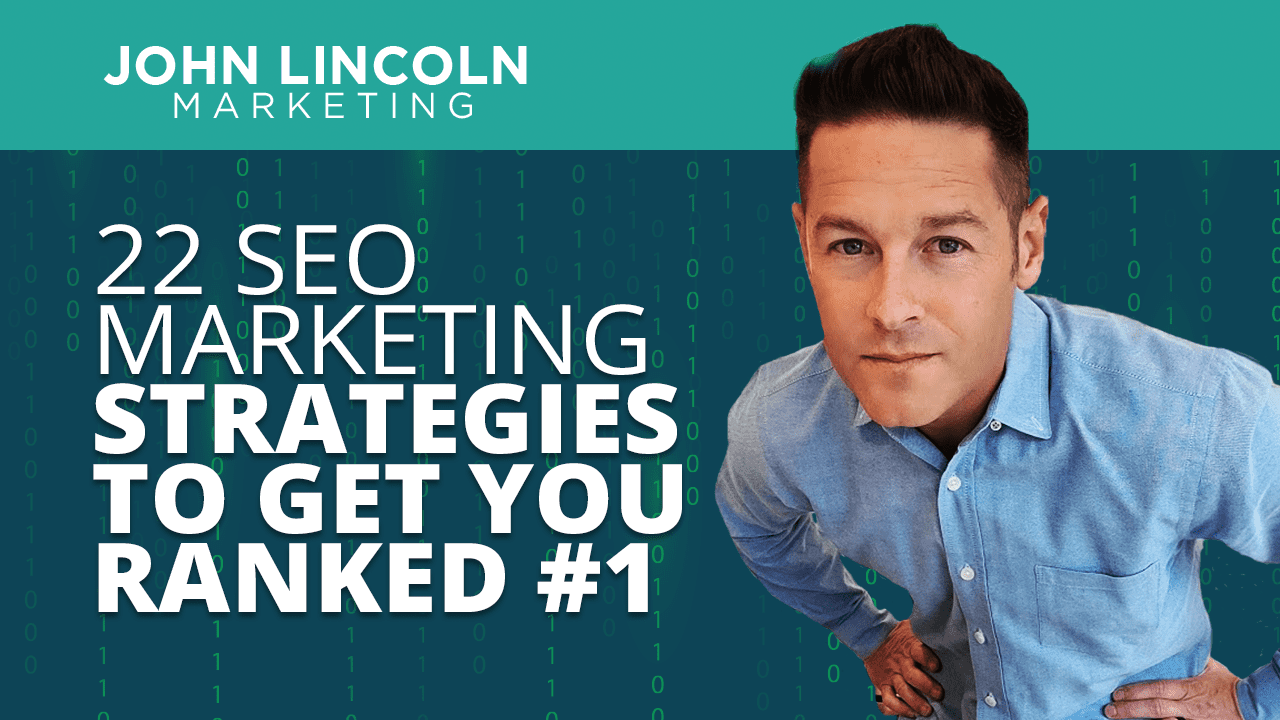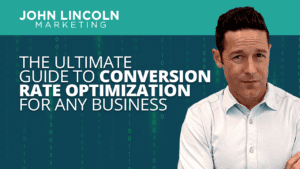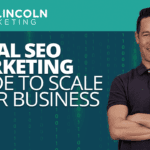
Top 16 Questions to Ask a PPC Company in 2024
In 2024, choosing the right PPC company is not just about spending your advertising budget. You want to make every cent count towards your business

Let’s talk about some of the best things you can do to boost your rankings and start scoring more organic traffic to your site.
The best SEO marketing strategies all have one thing in common: quality content. And for good reason, great content is one of the most important ranking factors.
It should be unique on every page while offering real value to your readers. Quality content should carry your site. It’s what makes a great landing page, category template, or blog. If nothing else, work on improving your content.
When you’re creating content, it can be tempting to stuff in keywords to try to make search engine robots happy. Resist this temptation.
Write quality content that your audience will enjoy reading and sharing. It is more important to your SEO content strategy that you’re building your authority and adding value to your audience than it is to stress yourself out trying to hit length and keyword goals.
There’s one kind of content that search engines love: long-form.
While it’s not defined by an exact number, I personally aim for at least 1,500 words. If you really want to improve your ranking, shoot for 3,000-5,000 words.
Why the high word count? Because more words of quality content give search engines more to index. It also provides more valuable information to your reader.
Far too many content creators focus on how to get their pages to rank that they lose sight of the user experience.
This can be a fatal error though because user experience impacts both your audience and your SERP ranking. If your page doesn’t load quickly, isn’t easy to read, or doesn’t have eye-catching and informative graphics, you can forget about any other SEO work you might do.
Want a one-stop-shop for data and insights that will improve your SEO content strategy? Check out your Google Core Web Vitals!
This awesome free tool from Google will give you an inside view of how your SEO work is helping or hurting your site. In this platform, you can check your page history speed, evaluate page experience, check your update readiness, and more.
How you format your content goes hand-in-hand with improving your user experience.
Your format also comes into play when it comes to featured snippets. These paragraphs of information appear directly on the SERP page and have been shown to increase organic traffic.
To optimize your content for featured snippets, make sure your answers include your target keyword, are brief or in list form, and exist in your H2 subheadings.
Your content needs to be concise and natural. It also must be written in the format that you want your Featured Snippets to appear.
For example, if you want a bulleted list in your featured snippet, be sure to include a bulleted list within your content.
Quality backlinks are right up there with quality content for your SEO content strategy. If you’re gunning for the #1 spot, you’ll need both. Luckily for you, they go hand-in-hand. The better the content, the more people will link to it.
Improve your backlinks with a strong social media presence, solid connections with other industry authorities, and a clear SEO strategy.
There’s no argument that technical SEO is extremely important. But when it comes down to it, quality content and native backlinks are more worthy of your time and focus. Once you have keywords picked and your content plan laid out, then it’s time to turn to the technical side.
Technical SEO is a broad term. It encompasses everything from site load time (make it fast! 47% of visitors will leave if a site takes longer than 3 seconds to load), mobile-friendliness, and duplicate pages.
Speaking of technical SEO marketing strategies, page speed still has a huge impact on your SEO and SERP ranking. Not only will the algorithm abandon your site if it’s too slow, but so will your audience.
Stop this from happening by increasing your page speed. Remove unnecessary page elements, don’t rely heavily on CSS and JavaScript, and delete unused widgets and plugins.
No one wants to be the small fish in a big pond. But it’s an unfortunate reality for many small businesses who face big competition.
Rather than compete for the general, big-ticket keywords, narrow your focus to specific products or services where you excel. This will make you stand out from the crowd. The traffic that comes to your site will be more likely to follow through with a purchase because it’s clear that you provide exactly what they’re looking for.
In the late summer of 2021, Google announced a huge SEO change: your page title is now going to be considered the content within your H1 tag.
This makes your H1 and H2 tags more important than ever. Optimize your page titles by including your preferred keywords in these headers.
Your title tag is based on the HTML within the page. When those are changed, the page title tag will also change.
SEO used to be a much dirtier business. Rather than earning links and rankings through quality content, SEOs would often rely on manipulation to climb through the ranks.
Though Google has cracked down on those black hat techniques, many still find their businesses involved in some shady business. To keep it strictly white hat, watch out for the following:
Black Hat SEO is good for one thing: racking up Google penalties and tanking your SERP ranking.
Once you’ve compiled a solid keyword list, the next step is determining which is appropriate to target on each page. For example:
It’s important to use keywords but even more important that they are used appropriately in your SEO content strategy.
When it comes to URLs, the general rule of thumb is the shorter the better. Make it easy to read and remember if you want to drive more organic traffic.
This advice applies to Google as well. The shorter the URL, the easier it is for a boy to read. This is especially important for blog pages. Cut out all unnecessary words to make it as short as possible.
While you want your URLs to be short, you also want to include one or two keywords. Choose the most important keywords and optimize your content for that particular one.
For example, on your homepage, your URL would include at least one of your primary keywords.
The URLs for your blog pages should also contain the keyword you want to be associated with that page. The same is true for your category, services, or product pages.
Security is a top priority for Google and they are insisting that it also be for you, too. If you haven’t made the switch from HTTP to HTTPS, do it now.
Besides being more secure for you and your audience, it could also be what’s keeping you from a higher rank. Google isn’t going to return an unsafe page, no matter how good the rest of their SEO work is.
Have you optimized your page for local SEO? If not, you should. Especially if you want to target local audiences, it’s time to cover your local SEO ground to make sure you’re a contender for the top spot in the SERPs. That means:
There are so many ways to boost your local SEO content strategy and you should be looking into all of them.
Want to catch a scroller’s eye? Use an image or graphic!
However, just like keywords, more isn’t necessarily better. Only include quality images that really add to your content. Don’t forget to include descriptions, alt-tags, and captions to make your page more searchable and accessible.
More and more internet users are accessing sites on their mobile devices. Make sure that your site loads just as well on mobile as it does on a desktop.
This will play into user experience as well as how you are ranked by the algorithms. If your site isn’t mobile-friendly, Google isn’t going to return it in search results.
Email marketing isn’t going anywhere. In fact, it continues to generate some of the highest returns, with an average ROI of $36 for every $1 spent.
It’s also an ideal way to connect with customers. You don’t have to rely on searchers to stumble across the posts you’ve spent time and resources on. Instead, take an active approach and send them to your client base.
If they like what they see, they may leave comments or share it with others. And the more links and shares? The higher that page will rank.
Social media’s effect on SEO hasn’t always been easy to understand. Though there’s been an almost constant back and forth over social media’s status as a ranking factor, one thing appears to be pretty clear: social media, though not a direct ranking factor, is an indirect one.
That’s because the links used in social media – like all other links – are a ranking factor. The more links your content gets through your social platforms, the higher it will rank.
Just keep creating great content and share it across all of your accounts. It will expose you to a larger audience and increase the likelihood of obtaining natural backlinks.
Graphics are great for SEO but infographics are even better! People love the quick and easy access to great content in a shareable format. More engagement and traffic means more links and therefore, a higher rank.
To create an infographic that will deliver those results, always focus on the content first. If you’re creating one simply for the sake of having one, you’re quite simply doing it wrong. One of the best ways to do this is to repurpose your existing content.
Also, make sure it’s visually appealing so more people will be inspired to share it!
Increasing your rankings isn’t as hard as it seems. All it takes is a great SEO content strategy and quality content. Try one (or all!) of the ones above, and before long you’ll be sitting pretty in Google’s top spot.
Welcome to John Lincoln’s personal website. You can learn about John Lincoln’s books, films, book him to speak and contact him. John is directly associated with many of the businesses mentioned on this website and freely discloses this information.

John Lincoln is CEO of Ignite Visibility, one of the top digital marketing agencies in the nation. Ignite Visibility is a 6x Inc. 5,000 company. Ignite Visibility offers a unique digital marketing program tied directly to ROI with a focus on using SEO, social media, paid media, CRO, email and PR to achieve results. Outside of Ignite Visibility, Lincoln is a frequent speaker and author of the books Advolution, Digital Influencer and The Forecaster Method. Lincoln is consistently named one of the top digital marketers in the industry and was the recipient of the coveted Search Engine Land “Search Marketer of The Year” award. Lincoln has taught digital marketing and Web Analytics at the University of California San Diego since 2010, has been named as one of San Diego’s most admired CEO’s and a top business leader under 40. Lincoln has also made “SEO: The Movie” and “Social Media Marketing: The Movie.” His business mission is to help others through digital marketing.
Want to get in touch with John Lincoln? Click Here To Reach Out.

In 2024, choosing the right PPC company is not just about spending your advertising budget. You want to make every cent count towards your business

Whether you’re a seasoned marketer or just starting out, conversion rate optimization (CRO) is a powerful tool that can boost your sales, leads, and overall

Feeling overwhelmed by the sea of SEO companies out there? You’re not alone! Choosing the right partner is crucial for achieving your online marketing
 Local SEO Marketing Guide to Scale Your Business
Local SEO Marketing Guide to Scale Your Business You’re working on your content marketing and have a solid social media presence. You’ve also made sure you’re taking the